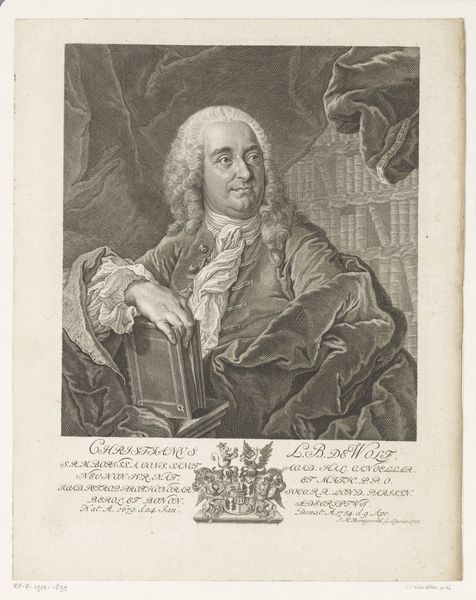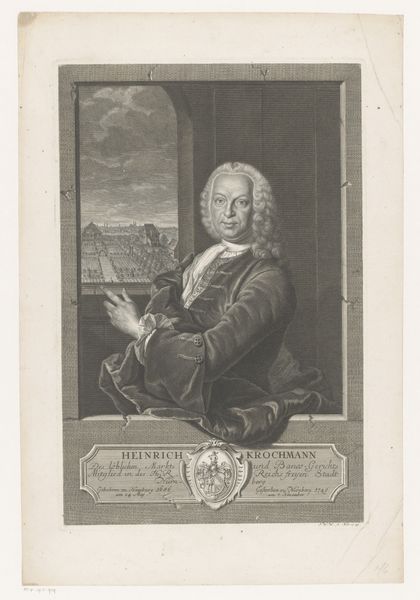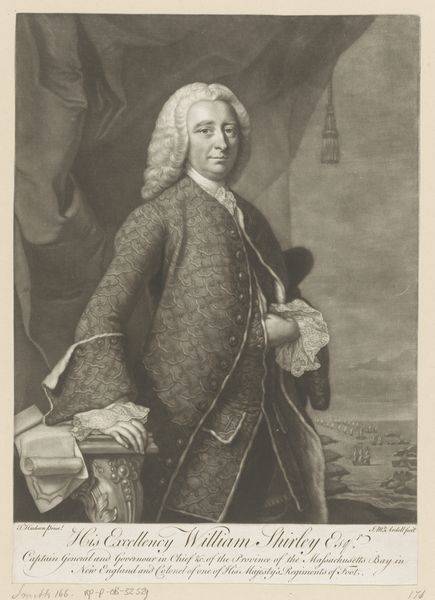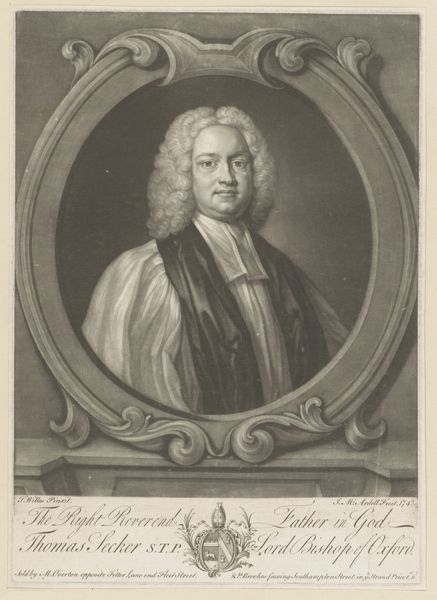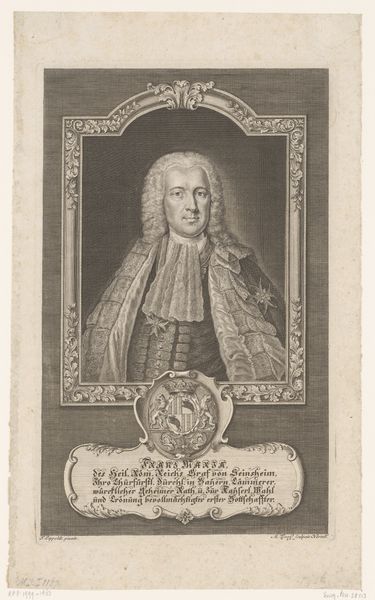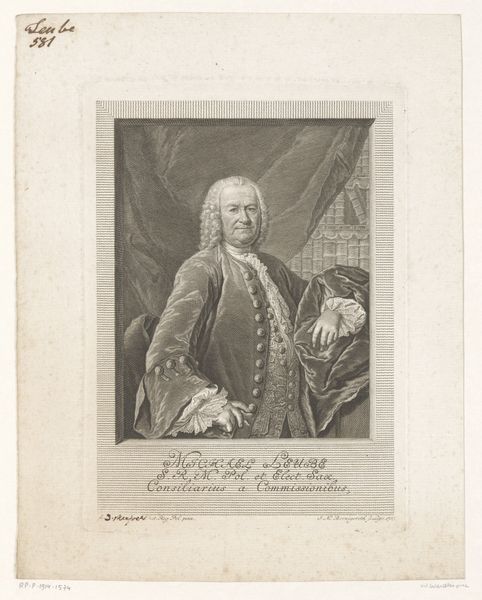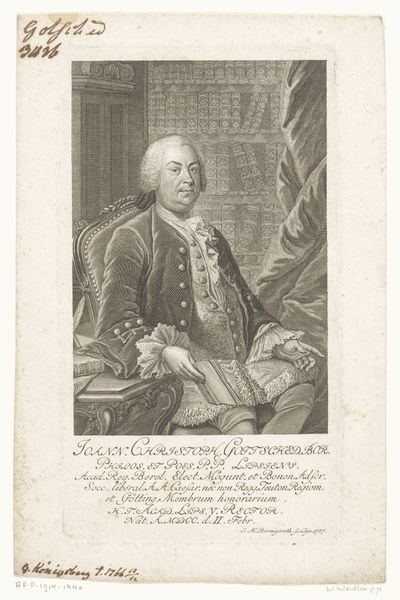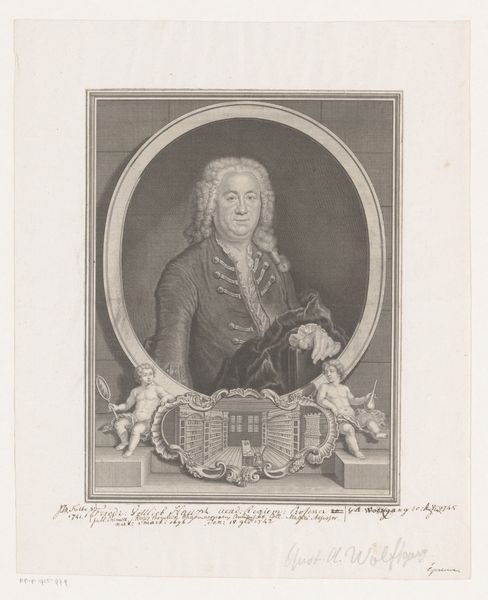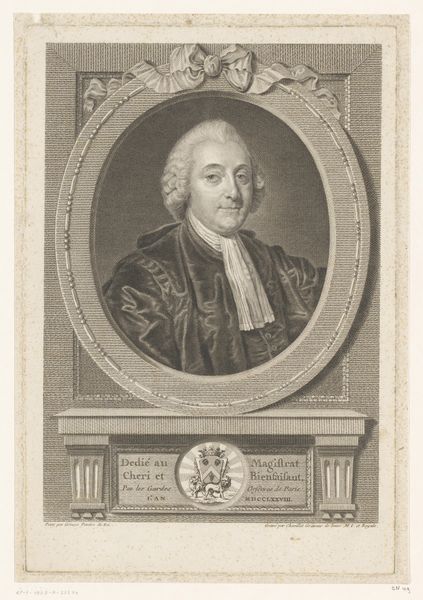
metal, engraving
#
portrait
#
baroque
#
metal
#
history-painting
#
engraving
Dimensions: height 460 mm, width 320 mm
Copyright: Rijks Museum: Open Domain
Curator: This engraving from 1760, found here at the Rijksmuseum, presents a portrait of Paul Jacob von Marperger, attributed to Johann Wilhelm Windter. My attention is immediately drawn to the intricacy achieved through what appears to be meticulous metalwork. Editor: My first impression? A man caught in a moment between worlds – that elaborate garb screaming aristocracy, but the backdrop hints at the burgeoning Age of Enlightenment. Curator: Absolutely. The formal elements clearly display the enduring influence of Baroque aesthetics: rich detail, elaborate compositions—everything underscores power and status, conforming to historical norms for portraying public figures. The text integrated into the piece reinforces these notions by literally inscribing Von Marperger's legacy through the work itself. Editor: Yet there's a restless energy. I mean, the billowing cloudscape, the implied gesture outwards—almost as though he's inviting us into the future even as he's anchored by those heavy classical pillars. Curator: Consider the technique required for an engraving of this complexity. Think of the labour invested in each precise line, the planning necessary to translate flesh and fabric into marks upon metal! The print would be infinitely reproducible and circulated widely, imbuing its sitter with power across vast networks of exchange and viewing. Editor: And it democratizes him in a way, doesn’t it? This object, this portrayal, makes Von Marperger tangible, somehow mortal. A printed portrait shrinks the space between nobility and the everyman gazing upon it, maybe even offering a glimpse beyond just pomp. I keep circling back to his hand... extending a silent offer. Curator: Your focus makes sense. He extends both status and invitation. It shows how the artist utilized available techniques of mass production of that era to mediate power to build cultural connections. These portrait engravings acted as documents cementing place of those individuals in public life through widespread, almost democratic viewership. Editor: You’ve contextualized its presence beautifully. Seeing beyond Von Marperger as the ‘subject,’ to understanding this as object—manufactured, marketed, meaningful on multiple layers. Curator: Exactly. And by investigating further through materials of its making, and its role during his time, perhaps you and I came to understanding more than initially perceived when regarding art like Von Marperger.
Comments
No comments
Be the first to comment and join the conversation on the ultimate creative platform.
